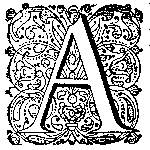Ignis artificiosus. Images of God and the Universe in Rubens’s Depiction of Antique Shields
DOI:
https://doi.org/10.18352/emlc.70Keywords:
Peter Paul Rubens, shield, ekphrasis, aether, Justus Lipsius’s natural philosophy, ecpyrosisAbstract
Rubens’s intellectual pursuits are not new to art historians. Much ink has been spilled to illustrate how much and in which way both the classical heritage and Lipsius’s Neostoic thought influenced his artistic production. This article aligns with this scholarly tradition, by concentrating on a peculiar motif depicted by Rubens on antique shields between 1616 and 1618, and by showing how ancient ekphrasis and Lipsius’s natural philosophy, imbued with Platonic and Hermetic ideas, played a fundamental role in Rubens’s invention of this original and powerful image. The latter represents the embodiment of the laws of nature and God, bringing to mind the theological and philosophical discussions circulating among intellectuals at the beginning of the seventeenth century.
Downloads

Published
Issue
Section
License
Copyright (c) 2018 Teresa Esposito

This work is licensed under a Creative Commons Attribution-NonCommercial 4.0 International License.





